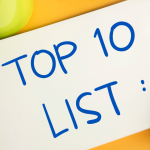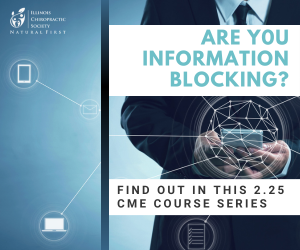
Ten Studies that Will Impact Patients and Chiropractic Practices

Medline contains more than 28 million references, with over one million new citations added each year. Keeping up is tough, but the ChiroUp research team makes it easier by continually scouring and summarizing published literature to mine fresh clinical pearls and best practice data. The following up-to-date chiropractic research review offers ten recent studies that will impact our patients and practices.
1. Neurodynamic Exercises Help Cervical Radiculopathy
“Neural mobiization appeared to be effective to improve overall pain intensity when embedded in a physiotherapy treatment in the management of musculoskeletal neck disorders with nerve-related symptoms.”
Deeper Dive: Review this ChiroUp blog for a quick refresher on 3 Simple Nerve Flossing Exercises to Help Resolve Arm Pain.
Varangot-Reille C, Cuenca-Martínez F, Arribas-Romano A, Bertoletti-Rodríguez R, Gutiérrez-Martín Á, Mateo-Perrino F, Suso-Martí L, Blanco-Díaz M, Calatayud J, Casaña J. Effectiveness of Neural Mobilization Techniques in the Management of Musculoskeletal Neck Disorders with Nerve-Related Symptoms: A Systematic Review and Meta-Analysis with a Mapping Report. Pain Medicine. 2021 Oct 11. Link
2. DASH Diet Eases Migraine
“We observed greater decreases in the frequency… and severity… of migraine in the DASH [Dietary Approaches to Stop Hypertension]…”
Pro Tip: Download a customizable DASH diet infographic here.
Arab A, Khorvash F, Kazemi M, Heidari Z, Askari G. Effects of the Dietary Approaches to Stop Hypertension (DASH) diet on clinical, quality of life, and mental health outcomes in women with migraine: A randomised controlled trial. British Journal of Nutrition.:1-28. Link
3. Previous Concussion is a Risk Factor for Migraine
“In patients presenting with migraine, a prior history of mTBI [concussion] was associated with a diagnosis of chronic migraine, disability, anxiety and depression severity, as well as dizziness, vertigo, and word finding difficulty.”
Pro Tip: Share this Migraine infographic with your patients and social media followers.
Ishii R, Dodick DW, Trivedi M, Dumkrieger G, Schwedt TJ. A History of Mild Traumatic Brain Injury Is Associated With a More Severe Long-term Migraine Phenotype. Neurology. 2022 Jan 4;98(1 Supplement 1):S1-3. Link
4. Scapular Dyskinesis Contributes to Neck Pain
“There was a high prevalence of scapular dyskinesis among office workers with neck and scapular complaints.”
Deeper Dive: Review this 15 Minutes to Clinical Excellence webinar on Scapular Dyskinesis.
Vongsirinavarat M, Wangbunkhong S, Sakulsriprasert P, Petviset H. Prevalence of scapular dyskinesis in office workers with neck and scapular pain: Scapular dyskinesis in office workers with neck and scapular pain. International Journal of Occupational Safety and Ergonomics. 2021 Dec 15(just-accepted):1-8. Link
5. Abnormal MRIs Don’t Predict Shoulder Pain
…neither the number of rotator cuff tendons nor the severity of each tendon reported as abnormal on a MRI was associated with pain occurrence across movements and activities commonly perceived as painful by people with chronic shoulder pain….”
Pro Tip: Share this Imaging infographic with your patients and social media followers.
Alaiti RK, Caneiro JP, Gasparin JT, Chaves TC, Malavolta EA, Gracitelli ME, Meulders A, da Costa MF. Shoulder pain across more movements is not related to more rotator cuff tendon findings in people with chronic shoulder pain diagnosed with subacromial pain syndrome. Pain Reports. 2021 Nov;6(4). Link
6. SHRed Program Reduces Basketball Injuries
” [In sixty-three teams, with 502 players] The SHRed Injuries Basketball program was associated with a 36% lower rate of ankle and knee injuries….Unsupervised and supervised implementations of the SHRed Injuries Basketball program had similar protective effects…. Neuromuscular training warm-ups are recommended as the minimal standard of practice for injury prevention in youth basketball.”
Deeper Dive: Check out the SHRed Program tutorial.
Emery CA, Owoeye OB, Räisänen AM, Befus K, Hubkarao T, Palacios-Derflingher L, Pasanen K. The “SHRed Injuries Basketball” Neuromuscular Training Warm-up Program Reduces Ankle and Knee Injury Rates by 36% in Youth Basketball. journal of orthopaedic & sports physical therapy. 2022 Jan;52(1):40-8. Link
7. Cervical Spine Pathology Increases Rotator Cuff Risk
“Patients with cervical spine pathology] had a 1.52-fold higher risk of rotator cuff tear than healthy controls.”
Deeper Dive: Review current best practice management in this ChiroUp Rotator Cuff webinar.
Wang JY, Lin YR, Liaw CK, Chen CH, Lin HW, Huang SW. Cervical Spine Pathology Increases the Risk of Rotator Cuff Tear: A Population-Based Cohort Study. Orthopaedic Journal of Sports Medicine. 2021 Dec 9;9(12):23259671211058726. Link
8. Nerve Flossing Reduces LBP & Neuropathy
“Patients in both slider and tensioner neural mobilization exercise groups demonstrated improvements in pain and ROM in patients with low back-related leg pain with peripheral nerve sensitization….”
Deeper Dive: Check out this video tutorial of Four Simple Nerve Flossing Exercises to Help Resolve Back and Leg Pain.
Alshami AM, Alghamdi MA, Abdelsalam MS. Effect of Neural Mobilization Exercises in Patients With Low Back-Related Leg Pain With Peripheral Nerve Sensitization: A Prospective, Controlled Trial. Journal of Chiropractic Medicine. 2021 Jun 1;20(2):59-69. Link
9. Inversion Lowers Disc Surgery Rate by Nearly Half
The 2-year surgery rate in the inversion participants in the registry (21%) was significantly lower than in the matched control group (39% at two years and 43% at four years). Inversion therapy relieved symptoms and avoided surgery.”
Pro Tip: Share this Inversion Table Infographic with your patients and social media followers.
Mendelow AD, Gregson BA, Mitchell P, Schofield I, Prasad M, Wynne-Jones G, Kamat A, Patterson M, Rowell L, Hargreaves G. Lumbar disc disease: the effect of inversion on clinical symptoms and a comparison of the rate of surgery after inversion therapy with the rate of surgery in neurosurgery controls. Journal of Physical Therapy Science. 2021;33(11):801-8. Link
10. Neurodynamics is Effective for CTS
“Carpal tunnel syndrome (CTS) is the most common entrapment neuropathy of the upper extremity… Neural mobilizations can aid in the reduction of neural edema, neural mobility, and neural adhesion while improving nerve conduction….Splinting is only effective when combined with neurodynamics.”
Deeper Dive: Review this recent blog on 7 New Skills for CTS.
Wise S, Bettleyon J. Neurodynamics Is an Effective Intervention for Carpal Tunnel Syndrome. Journal of Sport Rehabilitation. 2022 Dec 30;1(aop):1-4. Link

















